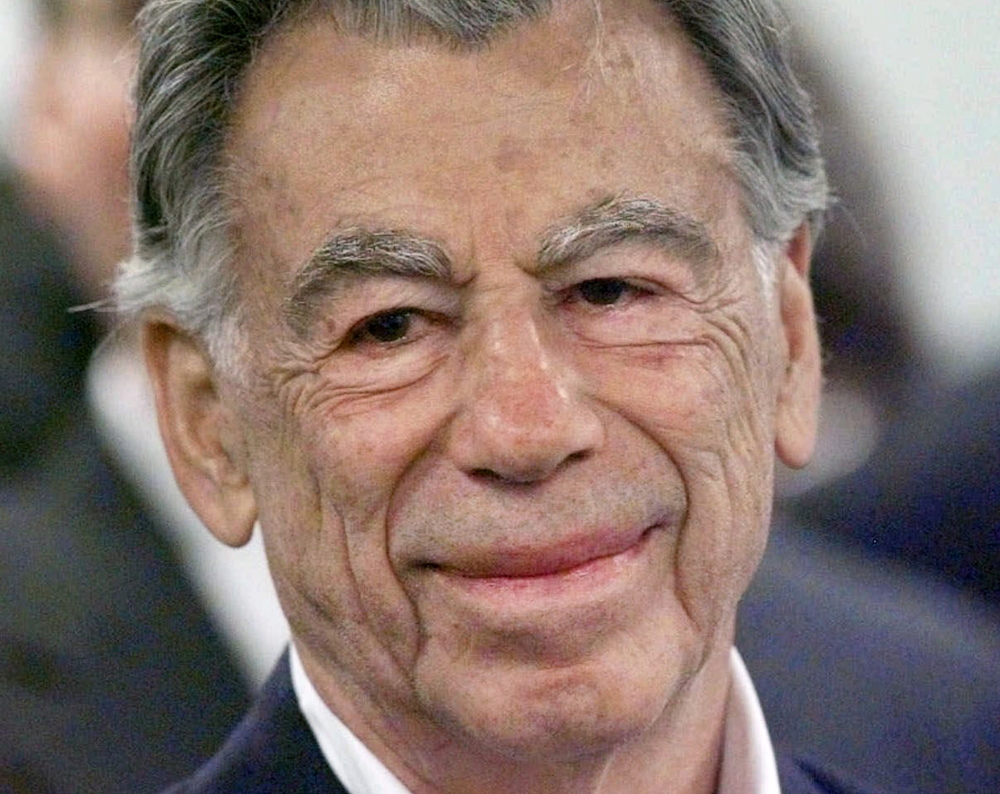LAS VEGAS — The monolithic hotel casinos that billionaire Kirk Kerkorian built on the sparkling Las Vegas Strip spoke for themselves.
Kerkorian didn’t have to.
In a desert landscape populated with showy conjurers, he was the opposite.
His business magic of buying and selling land, selling buildings and buying up others largely played out behind the scenes and shaped the Las Vegas skyline at the same time he was buying and selling the MGM movie studio – twice – and itching to take over automaker Chrysler.
Ultimately, the eighth-grade dropout turned boxer who started a small charter airline ferrying travelers to and from Las Vegas built the first modern mega-resort (The International) in 1969 and then another (MGM Grand) and another (the MGM Grand again), each time the world’s largest hotel.
Two multibillion-dollar acquisitions made MGM Resorts International the owner of the most Las Vegas Strip properties, nine, employing tens of thousands of people.
Land he sold became home to Caesars Palace, the Wynn and Encore, and Sands Convention Center.
“He laid the massive foundation and footprint upon which Steve Wynn’s creative genius built, and that Sheldon Adelson expanded – quite literally – even further by adding massive amounts of convention square footage,” said Bo Bernhard, executive director of the International Gaming Institute of the University of Nevada, Las Vegas.
The 98-year-old businessman died Monday in his Beverly Hills, California, home.
He ended up with an empire that never bore his name, exactly how he likely wanted it.
His Tracinda Corp., the largest single shareholder of MGM Resorts, was named for his daughters, Tracy and Linda, from his second marriage to former dancer Jean Maree Hardy.
Hardy, who still goes by “Mrs. Kerkorian,” said Tuesday that the family was grieving together.
Even Kerkorian’s philanthropic endeavors, though well-documented, never touted the man himself or the name Kerkorian.
He didn’t allow himself the perks of owning some of the largest resorts in the world, either, said Senate Minority Leader Harry Reid, D-Nevada.
“He would not take a comp for anything. Everything he paid for,” he said in a speech Tuesday morning from the floor of the U.S. Senate.
When others might clamor for ringside tickets to see and be seen at one of Las Vegas’ well-known boxing matches, he refused, preferring to sit higher in the stands, Reid said.
He shunned glitzy Hollywood parties and movie premieres in favor of making deals. Rather than arrive at an event by limousine, he often drove himself in a Mercury station wagon.
Between dealmaking, he felt the uncomfortable spotlight aimed at his personal life. His third marriage, to former tennis pro Lisa Bonder Kerkorian, made headlines in 2002 when she sued for what would have been the biggest child support award in California history, $320,000 a month. During divorce proceedings, it was revealed that Kerkorian was not the biological father of his much younger wife’s daughter, however. She was eventually awarded a much smaller but still significant amount.
He was born Kerkor Kerkorian in Fresno, California, in 1917, one of four children of a poor Armenian fruit grower. He dropped out of the eighth grade to become a boxer, taking on the nickname “Rifle Right Kerkorian,” but was too small to go pro.
He learned to fly before World War II and during the conflict flew dangerous delivery runs from Canada to Scotland.
After the war, with money saved, he refurbished a small twin-engine plane and flew passengers between Southern California and the growing desert gambling mecca of Las Vegas. In 1947, Kerkorian bought a tiny charter line and renamed it Trans International Airlines.
Nearly two decades later, he took TIA public and the stock soared. With cash from his stock and shrewd land deals along the Strip, he built The International, later the Las Vegas Hilton and now Westgate Las Vegas, the world’s largest hotel at the time, with more than 1,500 rooms and one of the world’s biggest stars in its showroom, Elvis Presley.
When Kerkorian opened the first MGM Grand in Las Vegas in the 1970s, it was again the world’s largest resort hotel, containing more than 2,000 rooms and a 1,200-seat showroom.
He was also at the helm when the first MGM Grand became the scene of one of the city’s worst disasters in 1980 when an electrical fire killed 85 people. Although personally devastated, Kerkorian reopened the hotel within a year and later sold it.
Years later, he would build another MGM Grand, this one with more than 5,000 rooms — and again, the world’s largest.
He went on to orchestrate the $6.4 billion merger between MGM Grand and Steve Wynn’s Mirage Resorts Inc.
In 2005, the renamed MGM Mirage Inc. completed its $4.8 billion acquisition of Mandalay Resort Group. The combined company’s holdings included the Bellagio, MGM Grand, Mandalay Bay Resort, Excalibur and seven nearby hotels.
In a span of more than 30 years, Kerkorian bought, sold and then again bought and sold the historic MGM movie studio.
Kerkorian had set his sights on the auto industry and tried to seize control of Chrysler Corp. in 1995 in a failed $23 billion hostile bid, trying and failing, again, in 2007.
Patty Glaser, his attorney of four decades who called Kerkorian a mentor, told The Associated Press he was a businessman who saw around corners.
Glaser said she would honor Kerkorian’s lifelong aversion to the spotlight by leaving it at that, mostly, declining to offer more details about the man she called a legend.
“He did what successful people should do. He did it every day of his life,” Glaser said. “He was a very caring, smart guy.”
Send questions/comments to the editors.



Comments are no longer available on this story